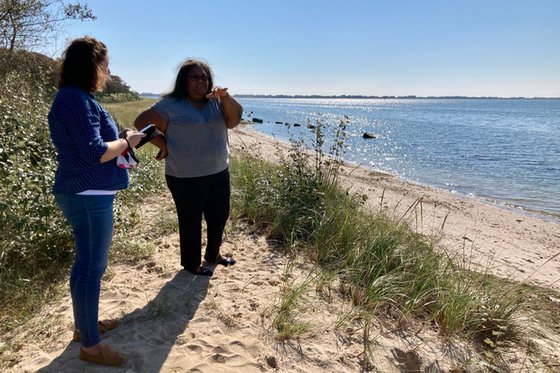We visit many places and dive into the history of artifacts to learn about the human connection to the sea. Understanding the importance of place and the meaning behind objects is crucial to exhibit development.
Shinnecock Reservation Cultural Center and Museum, Southampton, NY
During this research site visit, LICM staff spent more time talking with project advisors, exploring the collection of the Cultural Center and Museum, learning more about the relationship between the Shinnecock and the sea, and seeing the important work they’re doing to restore shorelines.
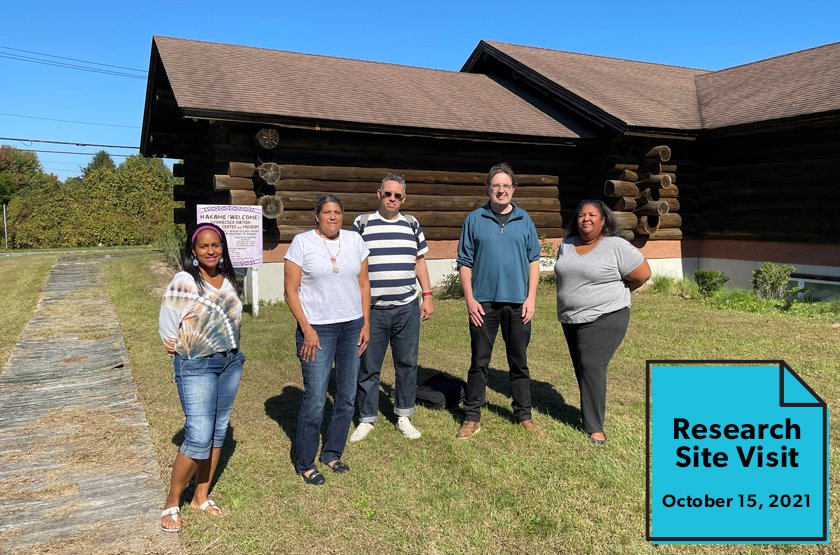
Exhibit team members Erik Schurink, Scott Larrabee, and Sarah Macey visited the Shinnecock Reservation Cultural Center and Museum in Southampton, NY and met with Saltwater Stories Advisor Josephine Smith, Director, Cultural Educator and Cultural Enrichment Program Coordinator, Shinnecock Indian Education Program; Andrea Godoy, Assistant Director, Cultural Center and Museum; and Shavonne Smith of the Shinnecock Shellfish Hatchery & Environmental Center.
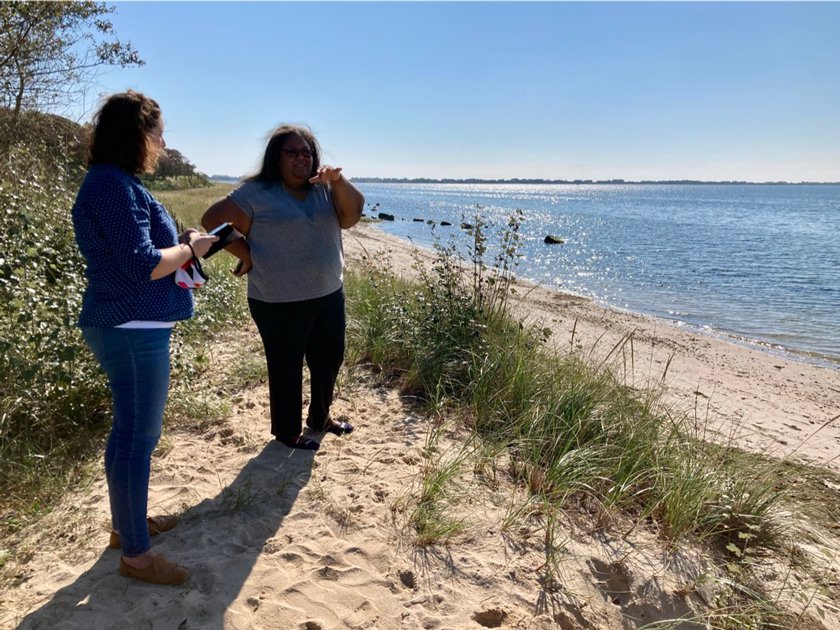
Long Island’s seashore has a rich sense of place that touches all our senses. Native Americans have a deep connection to maritime whaling history and go to the sea for ceremony and healing.
Maritime History
Margo Malter, Director of Exhibits, and Sean Allen, Creative Technologist and Exhibit Developer, visited Hofstra University’s Special Collections and the Whaling Museum & Education Center of Cold Spring Harbor in 2023 to meet with staff to gather more historical information and view images of objects that can be incorporated into the exhibition.
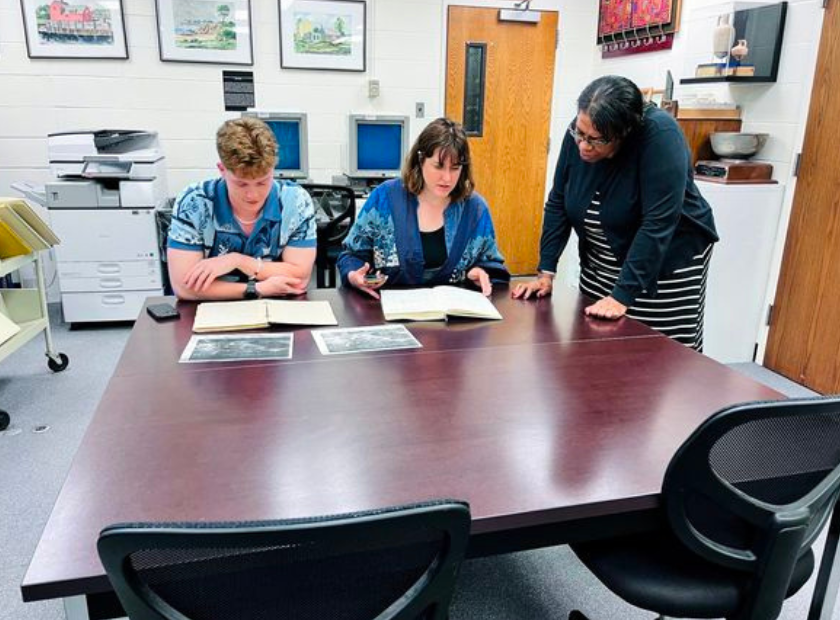
Margo and Sean visit Hofstra University’s Special Collections.
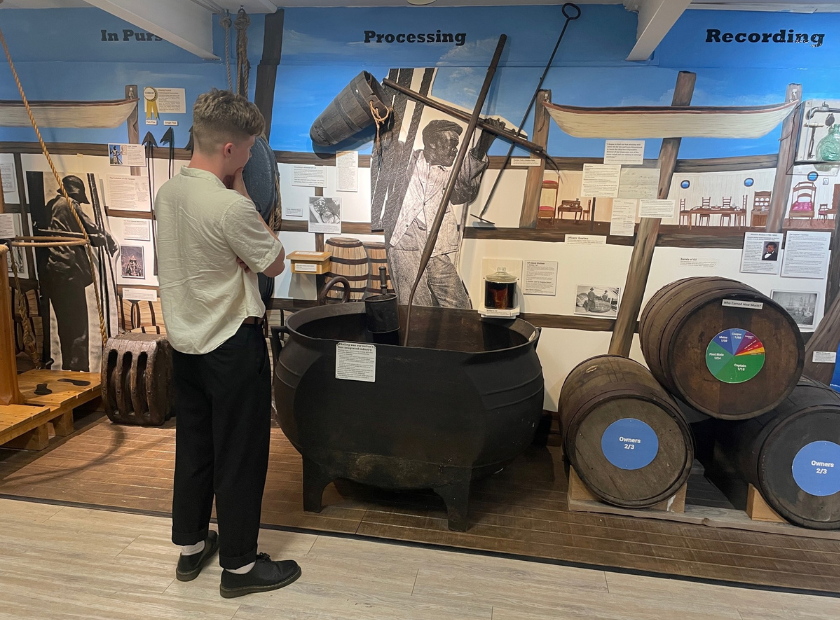
Sean is gathering information at the Whaling Museum & Education Center of Cold Spring Harbor.
Authentic Bay Houses
Margo and Sean traveled to Kevin Braunlich’s Bay House with Nancy Solomon, Director of Long Island Traditions, to gain a better understanding of how these distinctive structures are built and maintained. The exhibit will feature a recreated bay house for visitors to explore.
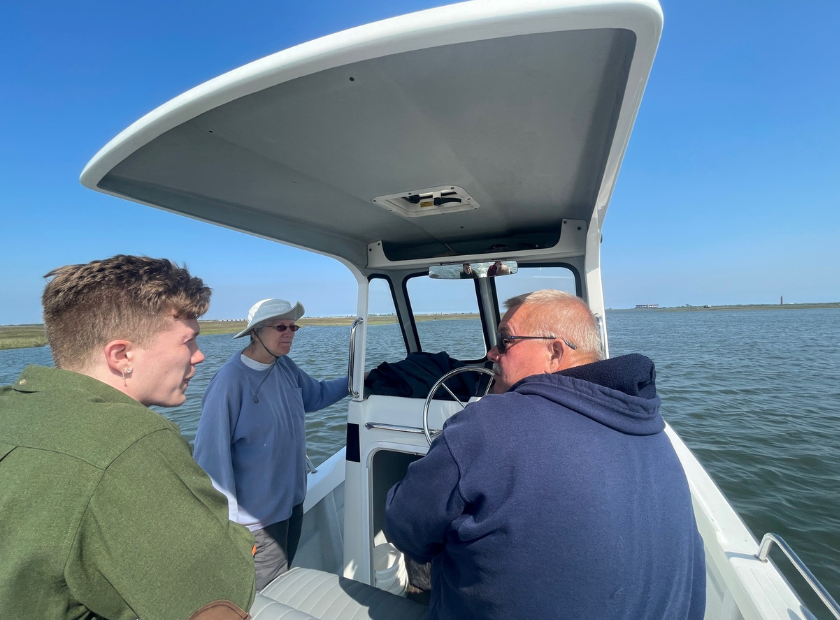
Margo and Sean joined Nancy Solomon and Kevin Braunlich to visit Kevin's Bay House. The only way to get to a bay house is by boat!
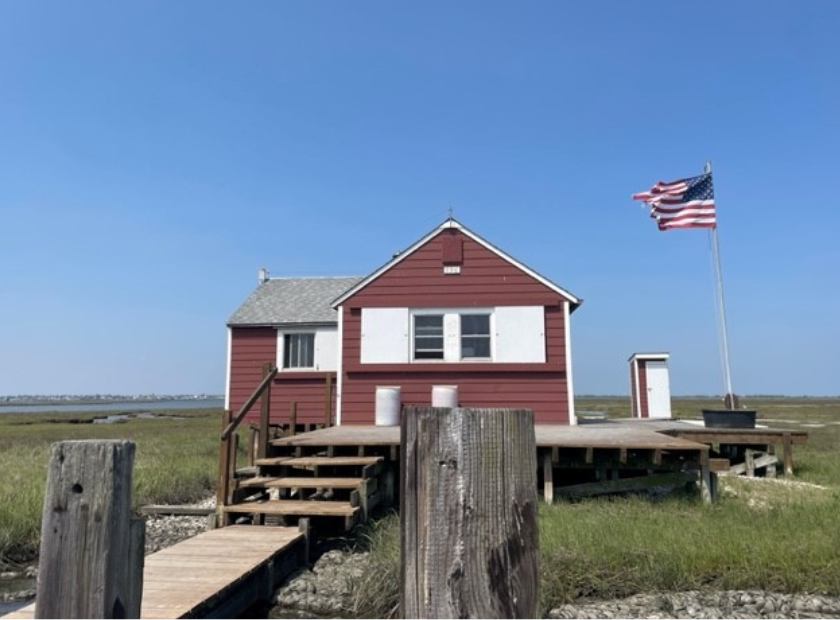
This is the bay house we visited to inform the replica bay house that will be part of Saltwater Stories: We Need the Sea and the Sea Needs Me.
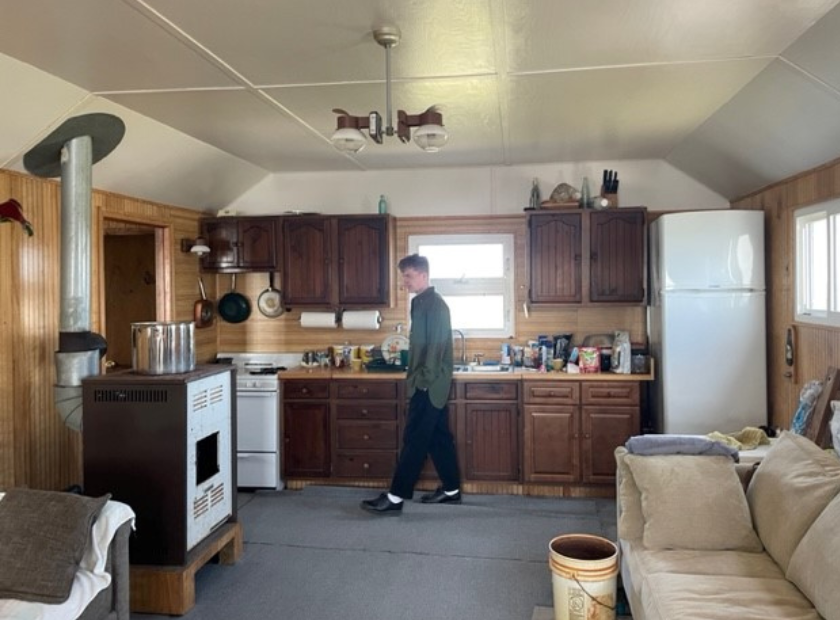
Being able to view an authentic space provides valuable information as we build an interactive bay house inside LICM.
Additional Research Site Visits
- Brooklyn Children's Museum, January 2021
- SPLASH, April 2021
- Garvies Point Museum, Glen Cove (NY), June 2021
- South Shore Bay Boat Tour, July 2021
- Two Cousins Fish Market, October 2021
- Hirshhorn Museum and Sculpture Garden, January 2022
- Planet Word Museum, January 2022
- Mystic Aquarium, June 2022
- Mystic Seaport, June 2022
- Jones Beach Energy & Nature Center, June 2022
Artifact Spotlight
Margo Malter, Director of Exhibits, is one of the lucky people who gets to study and select objects to include in the upcoming Saltwater Stories exhibition. This month, she’s highlighting one of her favorites: a harpoon. This harpoon is nearly 7 feet long and weighs 10 pounds.
Donated by Saltwater Stories advisor and educator Frank Turano, this 19th-century harpoon was constructed using a variation on the “Temple Toggle”: a crucial piece of whalecraft developed by the African American blacksmith Lewis Temple in 1848 in New Bedford, MA.
Frank explained to our team how the toggle works: “You would put a matchstick in this little hole here. Then, when you got the whale, the matchstick would break and the end would rotate, keeping the harpoon stuck in the whale’s side.”

Artifact highlight: A harpoon nearly 7 feet long, weighing 10 pounds, donated by Saltwater Stories advisor and educator Frank Turano.
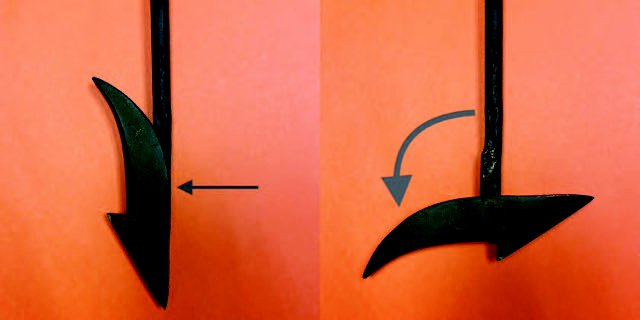
The mechanics of a 19th-century harpoon: A matchstick inserted in a hole (left) would break when the harpoon entered the whale. The harpoon would “toggle,” or rotate counter-clockwise (right) to remain inside the whale.
At the time of Temple’s invention, whales were a valuable commodity and most species were hunted almost to extinction. In 1986, hunting and killing whales was banned across the world. Populations of whales are now returning to the waters surrounding Long Island.
Whaling has a very long history on Long Island. It is just one of the many ways people have connected their lives and livelihoods to the sea. Saltwater Stories will explore these historical stories so visitors can understand how they have shaped our world today.
To learn more about whaling, African American whalers and key figures like Lewis Temple, visit the Whaling Museum in Cold Spring Harbor. There is a special exhibition open now called From Sea to Shining Sea: Whalers of the African Diaspora. You can also visit their online exhibition about the history of the Shinnecock Nation and whaling here.
This project is made possible in part by the Institute of Museum and Library Services and Humanities New York.


